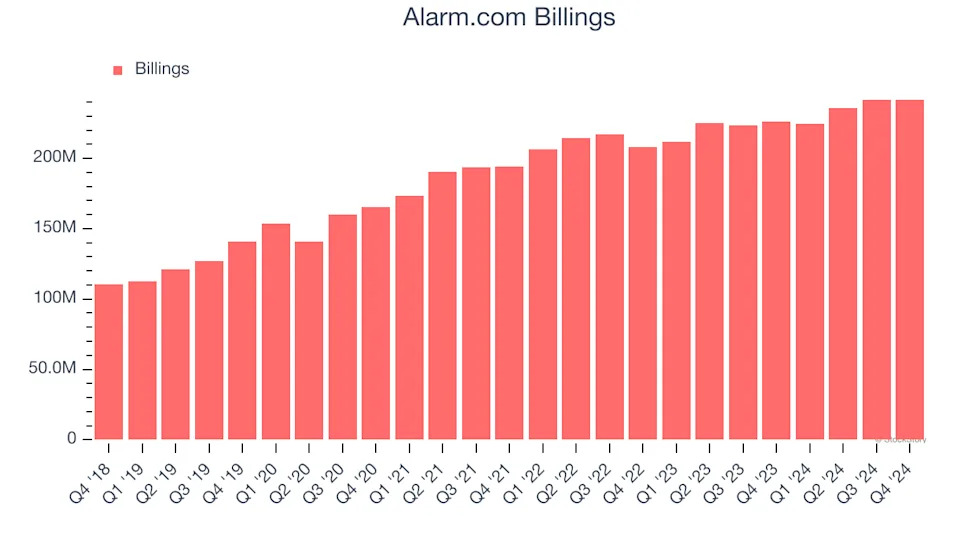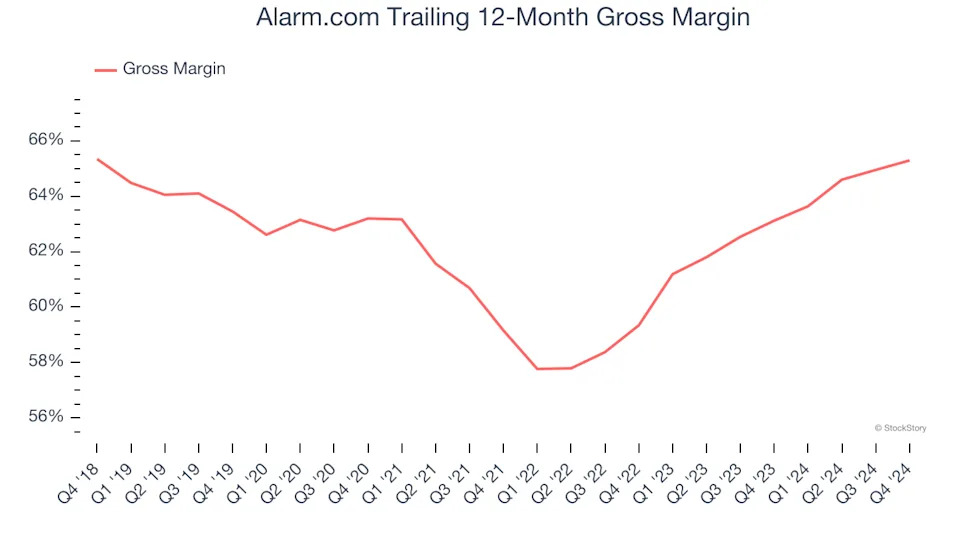
3 Reasons to Sell ALRM and 1 Stock to Buy Instead

Over the past six months, Alarm.com has been a great trade. While the S&P 500 was flat, the stock price has climbed by 8% to $58.43 per share. This run-up might have investors contemplating their next move.
Is there a buying opportunity in Alarm.com, or does it present a risk to your portfolio? Check out our in-depth research report to see what our analysts have to say, it’s free .
We’re happy investors have made money, but we don't have much confidence in Alarm.com. Here are three reasons why we avoid ALRM and a stock we'd rather own.
Why Is Alarm.com Not Exciting?
Founded in 2000 as a business unit within MicroStrategy, Alarm.com (NASDAQ:ALRM) is a software-as-a-service platform that enables users to control their security systems and smart home appliances from a single app.
1. Weak Billings Point to Soft Demand
Billings is a non-GAAP metric that is often called “cash revenue” because it shows how much money the company has collected from customers in a certain period. This is different from revenue, which must be recognized in pieces over the length of a contract.
Alarm.com’s billings came in at $241.8 million in Q4, and over the last four quarters, its year-on-year growth averaged 6.5%. This performance was underwhelming and suggests that increasing competition is causing challenges in acquiring/retaining customers.

2. Projected Revenue Growth Is Slim
Forecasted revenues by Wall Street analysts signal a company’s potential. Predictions may not always be accurate, but accelerating growth typically boosts valuation multiples and stock prices while slowing growth does the opposite.
Over the next 12 months, sell-side analysts expect Alarm.com’s revenue to rise by 4.3%, a deceleration versus its 7.9% annualized growth for the past three years. This projection doesn't excite us and implies its products and services will see some demand headwinds.
3. Low Gross Margin Reveals Weak Structural Profitability
For software companies like Alarm.com, gross profit tells us how much money remains after paying for the base cost of products and services (typically servers, licenses, and certain personnel). These costs are usually low as a percentage of revenue, explaining why software is more lucrative than other sectors.
Alarm.com’s gross margin is worse than the software industry average, giving it less room than its competitors to hire new talent that can expand its products and services. As you can see below, it averaged a 65.3% gross margin over the last year. That means Alarm.com paid its providers a lot of money ($34.70 for every $100 in revenue) to run its business.
